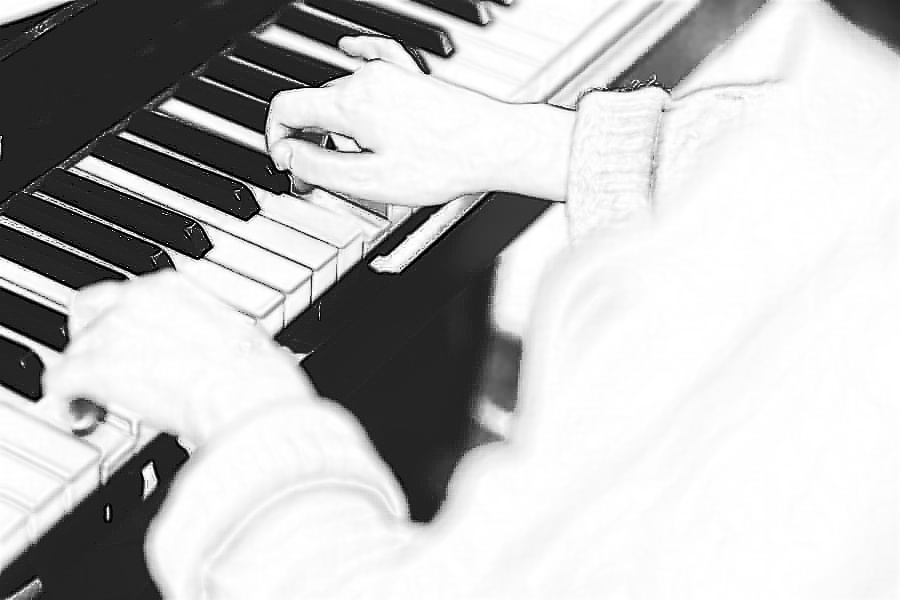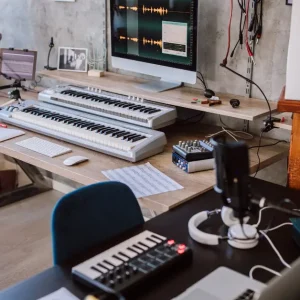Imagine yourself on a stage, in front of a large audience, as you play a song. Maybe it’s an original, maybe it’s a cover of a song you love, and as you sing, play your instrument, or do both at once, you feel the bright lights on your face and know that you’re doing what you’ve dreamed of for so long.
Whether you’re new to music or you’re a musician who wants to improve, you can get to the stage where you’re…well, playing onstage in a professional manner.
However, if you have issues with your rhythm and timing, you might be feeling stressed about this. Fortunately, there are ways you can improve your rhythm and timing. In this article, we’ll review how you can do this.
The Three S’s: Tips for Improving at Rhythm and Timing
Before we go into different types of rhythm and timing exercises you can do to improve your rhythm and timing, it’s important that we review the three S’s. Whenever you complete any of the exercises that follow, you should use the three S’s:
- Simple
- Slow
- Steady
How do these three S’s come into play? First of all, when you’re starting your exercises, you need to choose simple pieces. You can always go on to complicated ones later on as you improve. Additionally, choose a tempo that’s slow when you’re playing these pieces.
Finally, as you practice rhythms, focus on them being steady.
It’s also important to note, as we move on, the difference between rhythm and timing. Rhythm is the beats’ regular succession (these beats are strong and weak).
Timing, on the other hand, is related to your ability to keep the beat on your own, especially when you’re in a group of musicians.
Rhythm and Musical Timing Exercises
When it comes to how to improve rhythm and musical timing, you can benefit from doing a large number of exercises. These include recording yourself, marching to a pulse, tapping and counting, playing with an actual drummer, and practicing rhythm intentionally.
Recording Yourself
This is one of the simplest rhythm training exercises. First, choose a song you know incredibly well (for example, “Twinkle, Twinkle Little Star). Second, decide on a tempo that’s slow. Third, record yourself as you play or sing the song. Don’t use:
- A metronome
- Any backup
Fourth, listen back to the recording. Would someone else be able to tap to the beat you’ve created? Are you slowing down or speeding up? Clap or tap along to the recording. Note how many times you hesitated or were off the beat.
If there are any issues, don’t lose hope. This is an opportunity for you to improve.
Marching to a Pulse
Another option, when it comes to rhythmic and timing practice in the form of an exercise, is marching to a pulse. This is quite fun and has a name: eurythmics. When you do this, your movements are going along with the pulse.
When it comes to how to get better rhythm in this way, it’s best to use a metronome.
Tapping and Counting
This is another exercise you can do to improve music timing. To get started, put on one of your favorite songs. Then, as you listen to it, clap your hands as you feel each beat. Another option is tapping your leg, a table, or even an instrument like your piano or guitar.
When you start to feel comfortable enough to do so, add in counting. To do this, count:
- 1, 2, 3, 4, or
- 1, 2, 3
The one that you choose to count for this rhythm practice exercise depends on the song’s time signature. In each measure, the majority of songs will have a feeling of four or three beats. Try out both of these options to see which one fits the song you’ve chosen.
It helps to think about it this way. If the song sounds like it’s a waltz, each measure likely has three beats.
If the song sounds like it’s a march, on the other hand, then it’s likely that each measure has four beats.
Playing With an Actual Drummer
While it’s helpful to use a metronome and play along with it to build your internal time skills, it’s also important to develop a natural feel. This is where playing with an actual drummer can be helpful. If you don’t have this option, don’t worry.
You can also use loops or a quality drum machine to develop your internal time skills with a natural feel to them.
By doing this, you’ll be able to lock in, absorb, and internalize grooves.
Practicing Rhythm Intentionally
Another exercise you can do is to practice rhythm intentionally with your instrument. Chances are, you’re already spending a lot of time learning about theory and scales, and maybe you enjoy trying out a few solos on your guitar.
But how often do you sit down to practice the rhythm of a song? Whatever your instrument, sitting down to get down a new type of rhythm or the rhythm of a song will help you improve your rhythm over time.
Want to Learn More About Improving Your Music Skills?
Now that you’ve learned about how to improve your rhythm and timing, you might want to learn more about improving your music skills. Maybe you’re interested in learning music skills such as following melody or performing better on your instrument of choice.
Or maybe you’re interested in taking music lessons from a musician.
Whatever you want to learn, you can learn it at Sloan School of Music. Based in Hagerstown, Maryland, we offer music lessons, band programs, and more.
To discuss your music education needs, contact Sloan School of Music today.










